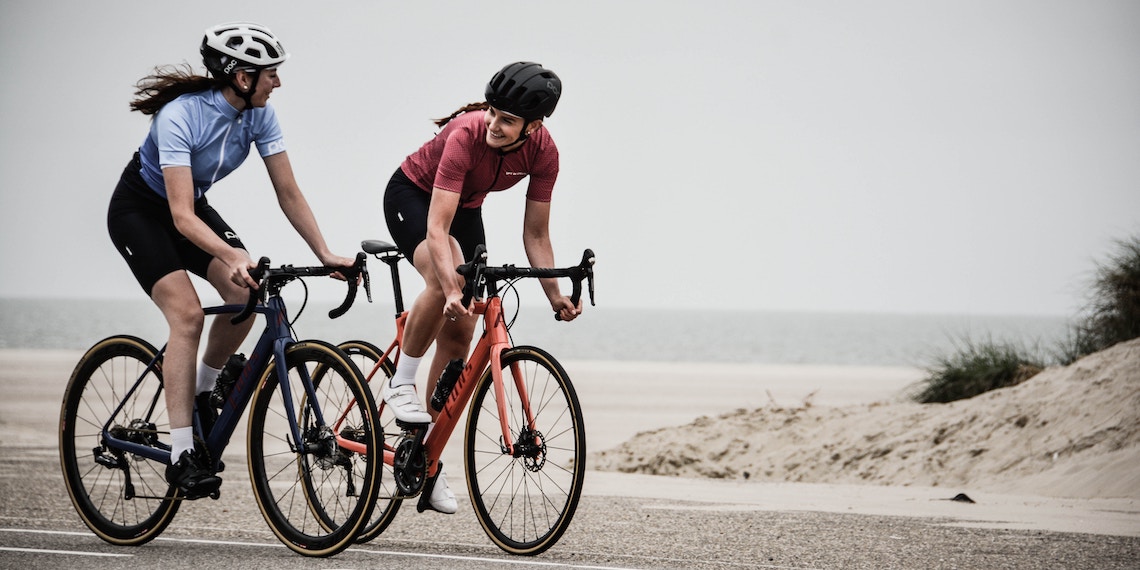Robert Jackson is an Ironman UK finisher and certified personal trainer based in Canary Wharf, London. He specialises in training time-poor office workers who want to get back in shape, and first time triathletes. Find out more at www.minimalfit.co.uk
So, you’d like to take on your first triathlon? You probably have lots of questions already, such as “how should I train for my first triathlon?”, “Can I use a mountain bike?” and “what distance triathlon should I choose?” I’ll be covering all that and much more in this helpful guide on how to train for your first triathlon. Before we get started, let’s clarify a few key points…
What Does A Triathlon Involve?
As the name suggests, there are three (tri) parts to a triathlon, which are completed in this order: swimming, cycling, then running. There are four main race distances you can complete, which are Sprint, Olympic, Half, and Full. Full distance is also commonly referred to as an Ironman Triathlon.
How To Pick A Distance
It’s good to set lofty goals, but only the brave or foolish would consider taking on a half or full distance triathlon for their first outing. Most people start with a sprint distance triathlon. In fact, some even start with a super-sprint, which is a newer addition to the scene to help accommodate first timers. I would personally recommend choosing either a super-sprint or a sprint distance, depending on your previous sporting experience.
The longer the distance, the more hours you need to spend training each week, and for more weeks leading up to your event. Because this post is aimed at first timers, I’ll assume you’re training for a sprint distance triathlon. A short answer is that you’ll want a good 12 weeks to prepare. There will inevitably be days or weeks where you can’t train because life gets in the way, so it’s rare you’ll actually be training for 12 solid weeks.

Let’s break down each discipline and see what kind of sessions we need to do for each one to make good progress. For swimming, you would ideally do 3-4 sessions a week. Little and often is key in order to keep your “feel” for the water, so the sessions need not be long, maybe even just 15 minutes. For cycling, you’ll want at least two sessions a week. 1 long ride, getting used to the distances and being comfortable on the bike, one interval session to improve your fitness, and, if possible, one hill sprint session to develop power. For running, again, at least two sessions a week following the same structure as cycling.
In total, that’s at least seven sessions a week. No one said triathlon training was easy! You also need a rest day, so you have to fit seven sessions into six days. First, let’s take a look at the first part of a triathlon, the swim.
Leg 1: Swimming
Swimming is the first stage of a triathlon. In most races, you will start in waves of different age groups which are separated by men and women. This is the case for most outdoor swim events, but for indoor (pool) swim events it will differ. Let’s start by taking a look at the differences between them so you can choose what’s best for you and your first event.
If you’re confident in the water and can get some good practice in open water before your event, go for an open water one. If you’re not a confident swimmer and are unlikely to join any courses or practice in open water, you’re probably better off starting with a pool swim. It’s entirely up to you, but I have seen many first timers have to get out of the water in open water events because they were not used to it and had not practiced.

Swimming in open water is incredibly intimidating just by itself. There are some key skills you need to master before you can swim in open water safely, effectively and efficiently, which include sighting, drafting (staying behind another swimmer), turning, wearing a wetsuit, and learning to be comfortable in cold and crowded water.
Because swimming is mostly about being comfortable in the water and being relaxed, the key part to all your swim sessions is about technique and being calm. There are a few different sessions you could do. One is a long steady swim, where you should aim to build up to swimming 1km in distance without stopping. Don’t worry about how long it takes, just aim for the distance and remaining relaxed. Another is an interval session. Aim to swim four lengths at a time (assuming a 25m pool) then rest for 60 seconds. Repeat those intervals for up to 30 minutes in total. The last is a technique session. Spending time improving your technique will pay dividends, but since swim technique is complex, make sure to get help from a local triathlon club or swim coach.
Let’s now transition into the second leg of the race, cycling.
Leg 2: Cycling
The cycling leg of nearly every triathlon is proportionally the longest part, which means that strong cyclists do quite well in triathlons unless they are terrible swimmers and runners. As a result, it pays to spend more time practicing cycling than any other area. For your first tri, there will be some key points to consider, so let’s get stuck in with the first one…

If you don’t have a road bike, don’t worry, but make sure that the race you enter allows mountain bikes. This is important, because a lot of events will not allow them. If you’re semi-serious about cycling or triathlon, a road bike is a must-have item. You don’t have to spend thousands, but a half-decent one will make a world of difference. Regardless of your bike selection, you can still perform the same style of training to maximise your performance.
Without going into too much detail, there are three main types of session you want to perform. Longer, steady pace rides (to get used to the distance you need to ride), interval sessions (aimed to do a set amount of time at a speed faster than you can hold for your steady ride, with a set amount of lower speed riding), and hill repeats (designed to improve your leg strength, fitness and ability to tackle hills).
Leg 3: Running
OK, now we’re onto the final leg of the race. The run. After swimming and cycling you are going to be tired, so this is where all your training sessions will help you. Let’s start by looking at brick sessions, which are called as such because they’re when you complete one exercise session after another.
A ‘brick run’ is where you run immediately after cycling, which is what you will do in the race. This is a very important technique to test out in training. If you have not done this before, it will be a shock. If you’ve pushed hard on the bike, your legs will be tired so when you start running they might cramp up. That’s why we practice it in training first.

After one of your bike rides, come home and have everything ready to go out for a run. You can treat it like a practice transition two. Get off your bike and as quickly as you can get out running. You should aim to do at least one of these types of session a week so you know you can run straight off the bike without getting cramp.
There are also other run sessions you can complete. These are the same as the cycling sessions and for the same reasons as already mentioned, longer, steady pace runs, interval sessions, and hill repeats.
Images: Coen van den Broek / Unsplash; Giphy (4)



















































